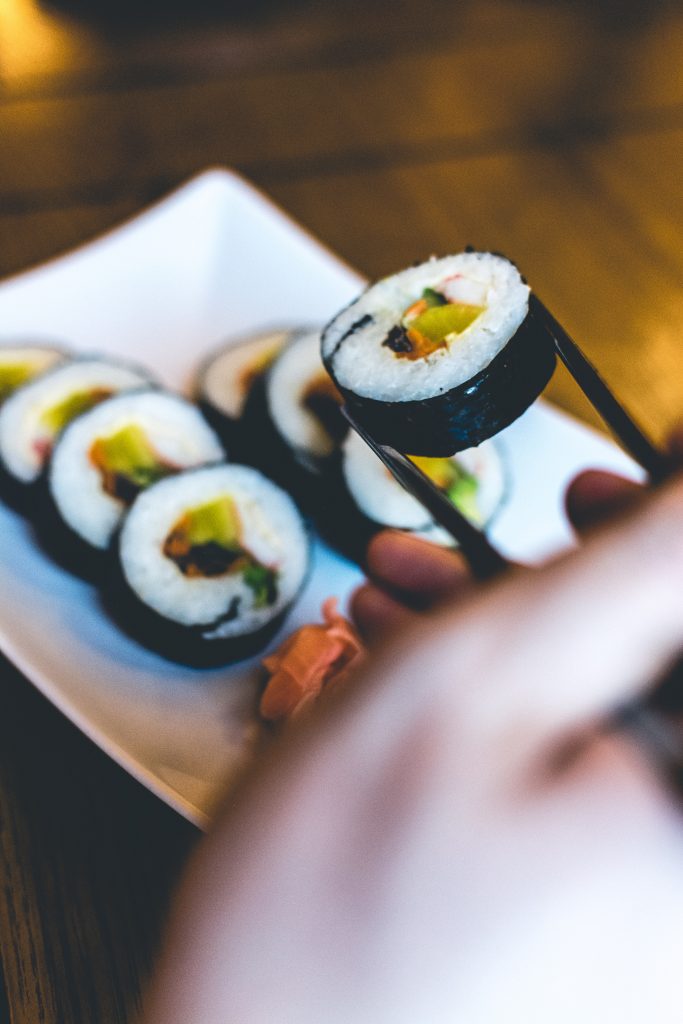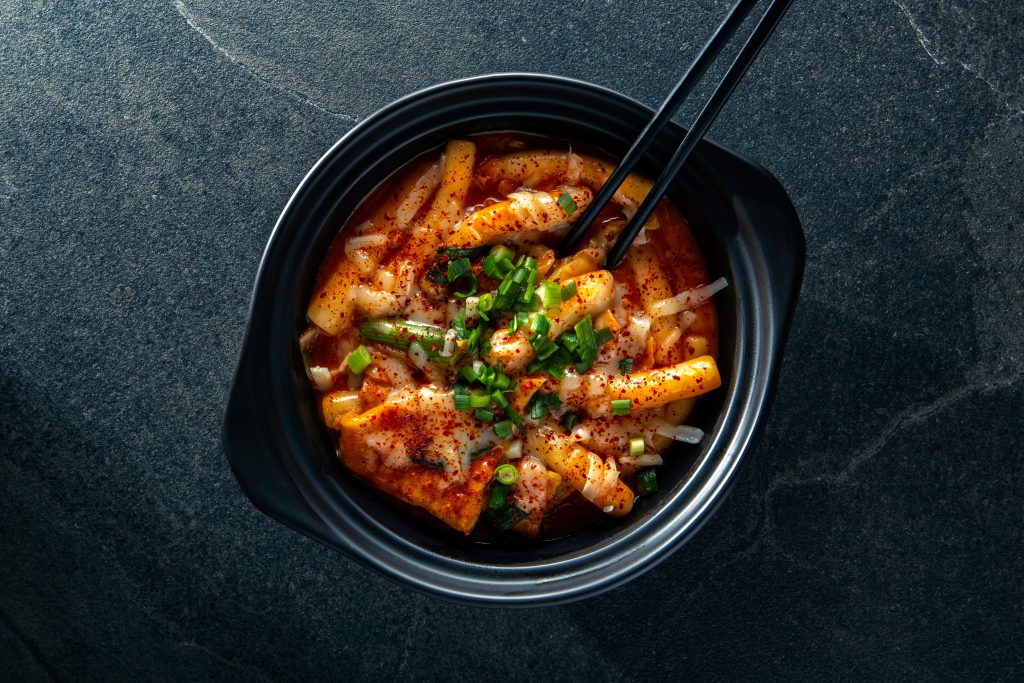By Usraat Fahmidah
To keep up with this latest food trend, here’s your guide to delicious Korean street food with Koryori —a cloud based kitchen that is bringing that K-drama food experience right at your doorstep
If all the K-dramas have got you salivating for delicious Korean street food, then you’re not alone. K-drama hits like Itaewon Class, Hospital Playlist, Weightlifting Fairy Kim Bok Joo have drawn our attention to a variety of delicious Korean food like Kimchi, Tteokbokki, Rabokki, Bibimbap, Miyeok-Guk. The list is endless.

KIMBAP
Kimbap is a traditional Korean food, and it’s often confused with Sushi. But they’re vastly different, and have unique rich flavors and history. Kimbap uses sesame oil unlike Sushi. Bap—Korean for cooked rice— is wrapped with Gim (dried sheets of seaweed). It’s a staple in Korean cuisine. The classic recipe uses Gim, cooked rice, beef, sliced carrots, blanched spinach, danmuji or yellow pickled radish. Although the traditional Kimbap is minimal with its ingredients, a variety of Kimbaps with different fillings can be found.
Koryori currently offers three kinds of Kimbaps in their menu: Egg, Beef and Tuna. You can pick your choice of protein. The rest of the fillings for the Kimbaps are the same: Gim, carrots, spinach, danmuji. They have it in Mayak (mini) and full size.
SOTTEOK SOTTEOK
Wondering what the leads from your favorite K-drama have from those street side food carts? It’s definitely Sotteok Sotteok. The word is a blend of sausage and tteok (rice cakes). Sotteok Sotteok is a fulfilling snack made with rice cakes and sausages that is served on a skewer.
The flavor profile and texture will leave you in a food coma. You get the chewiness inside from the rice cakes and the crunch outside from the fried tteok and sausages. The whole skewer is then coated in a sweet and spicy gochujang sauce.
Koryori has mastered that sotteok sotteok with its perfectly fried fluffy tteoks with salty mini sausages on a skewer dipped in gochujang sauce.
CORN DOGS
Korean style corn dogs are a game changer. They’re the BTS of corn dog world— the best. This delicious deep-fried goodness is coated in thick batter, and then deep fried. Usually they deep fry batter-coated hot dogs, rice cakes, fish cakes, cheese, potato and sometimes even ramen.
You can find variations of Korean corn dogs at Koryori: the classic corn dog with whole sausage, the ramen corn dog with half sausage and half cheese deep fried and rolled with crispy ramen, the potato corn dog with the cheesy goodness of mozzarella dipped and fried with potato cubes.

TTEOKBOKKI
If you haven’t had the enlightening experience that Tteokbokki is, then you’re missing out on life. Once you Tteokbokki in, you can’t Tteokbokki out. It’s similar to one’s journey of becoming an ARMY— there’s no backing out.
Tteokbokki steals all the adjectives from a food dictionary—rich, creamy, flavourful, textured, fulfilling, delicious, moist, savory and irresistible. You can find the dish pretty much everywhere in South Korea. The dish itself is very customisable. But a traditional Tteokbokki consists of Tteok (rice cakes) and bokki (stir fried food). In a base of gochujang (fermented pepper paste) sauce, rice cakes are cooked with an assortment of side dishes like fish cakes, sausages, boiled eggs, onions and topped with cheese. But you can be creative with it. You can use a jjang (sweet black bean) sauce base, add ramen, green onions and cabbage.
Koryori does exactly that and brings you 3 distinct mouthwatering flavors of Tteokbokki: Classic, Rose and Jjajang. Classic tteokbokki features spicy sauce, eggs, tteok, fish cakes and onion. The whole dish is a burst of flavors and textures in your mouth. You can’t get enough of it. Rose Tteokbokki is more mild with its sweet and creamy flavor profile. The sauce base is thick and creamy with a hint of sweetness. They substitute the chicken eggs for quail eggs, and add mini sausages to it. The rest of the ingredients remain the same. For Jjajang tteokbokki, they use a sweet and spicy black bean sauce with beef bites, fishcakes and chicken eggs.

THE ALLURE OF HANSIK
The popularity of South Korean food is rising worldwide, and its success can be attributed to the efforts taken by South Korea to establish gastrodiplomacy through the Global Hansik Campaign (Hansik means Korean cuisine). The South Korean government has taken impressive measures to promote their cuisine globally—what the New York Times calls “enshrining” of national dishes.
South Korea remains one of the biggest exporters of cultural goods through their entertainment industry. And their cuisine has now joined this list of cultural goods.
According to reports, instant noodles sales jumped 29.2% globally after characters in the Oscar-winning movie Parasite featured it. It was the same case for the honeycomb kit set that was shown in the Netflix hit Squid Game. South Korea’s food exports hit 14.6 percent in 2020 with ramen, tteokbokki, and kimchi among other foods. And their overseas shipment reached $4.28 billion last year— a record number. With the US becoming their largest buyer last year importing a staggering $798 million worth of food.
The rise of South Korean soft culture is inevitable— all of which has made the scrumptious cuisine now locally available. And if you’re a food enthusiast, you should definitely not miss out on the opportunity to experience it.













